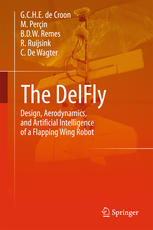

Most ebook files are in PDF format, so you can easily read them using various software such as Foxit Reader or directly on the Google Chrome browser.
Some ebook files are released by publishers in other formats such as .awz, .mobi, .epub, .fb2, etc. You may need to install specific software to read these formats on mobile/PC, such as Calibre.
Please read the tutorial at this link: https://ebookbell.com/faq
We offer FREE conversion to the popular formats you request; however, this may take some time. Therefore, right after payment, please email us, and we will try to provide the service as quickly as possible.
For some exceptional file formats or broken links (if any), please refrain from opening any disputes. Instead, email us first, and we will try to assist within a maximum of 6 hours.
EbookBell Team

4.4
82 reviewsThis book introduces the topics most relevant to autonomously flying flapping wing robots: flapping-wing design, aerodynamics, and artificial intelligence. Readers can explore these topics in the context of the "Delfly", a flapping wing robot designed at Delft University in The Netherlands.
How are tiny fruit flies able to lift their weight, avoid obstacles and predators, and find food or shelter? The first step in emulating this is the creation of a micro flapping wing robot that flies by itself. The challenges are considerable: the design and aerodynamics of flapping wings are still active areas of scientific research, whilst artificial intelligence is subject to extreme limitations deriving from the few sensors and minimal processing onboard.
This book conveys the essential insights that lie behind success such as the DelFly Micro and the DelFly Explorer. The DelFly Micro, with its 3.07 grams and 10 cm wing span, is still the smallest flapping wing MAV in the world carrying a camera, whilst the DelFly Explorer is the world's first flapping wing MAV that is able to fly completely autonomously in unknown environments. The DelFly project started in 2005 and ever since has served as inspiration, not only to many scientific flapping wing studies, but also the design of flapping wing toys.
The combination of introductions to relevant fields, practical insights and scientific experiments from the DelFly project make this book a must-read for all flapping wing enthusiasts, be they students, researchers, or engineers.